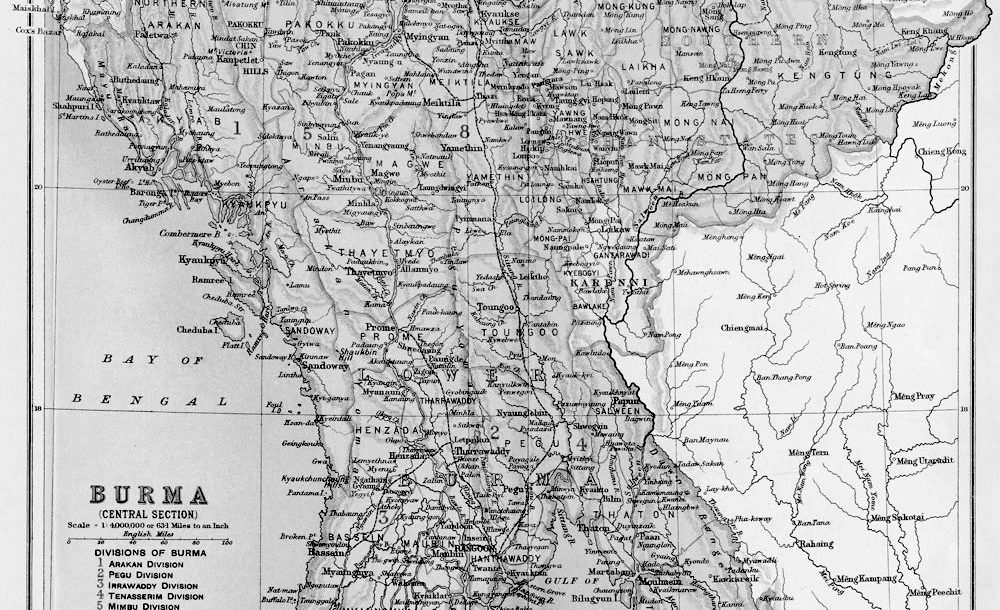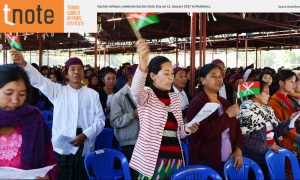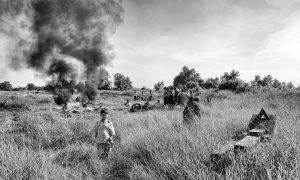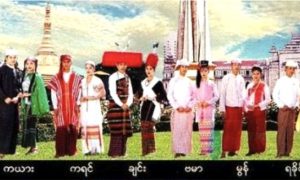Public discussions around Rohingya people currently fleeing violence in Rakhine state, Myanmar, have often involved arguments about history. While critical historical analysis is useful in offering insights into conflicts, History—if treated as a single, knowable past—is not. This is especially true when dealing with ethnicity. Whatever the past was, no amount of historical research can justify the current violence against Rohingya people.
The debate around Rohingya ethnicity lacks awareness of wider historiography (the history of historical research). On the one side, those denying that this is ethnic cleansing argue that there is no such thing as a Rohingya ethnic group. It is claimed that these people are actually Bengali Muslim migrants. The writings of historians such as Jacques Leider have been used, by some, to support this position. He argues that the use of the term Rohingya to connote this Muslim population, although noted by eighteenth-century European travelers, is a modern one. For him, Rohingya is primarily a political identity. On the other side, Rohingya activists have resisted this characterisation. They have countered that there is evidence of Muslims living in the Rakhine region for centuries, and that these groups have periodically been called Rohingya.
Writing in The Diplomat last year, one commentator attempted to disentangle these debates by arguing that “the Rohingya are not an ethnic, but rather a political construction. [emphasis in original]”. This is wrong. Not only wrong in the sense of it being inaccurate, but wrong in two other ways: 1) in that it relies on a false division between the categories “political” and “ethnic”, and then treats the two as if they are mutually exclusive; and 2) in that it assumes that we can definitively know people’s ethnic identification in the past.
Starting with 1). There is no ethnic identity that is not also, in part, a political construction. Ethnicity has proved a difficult object for historians to pin down. Its definitions and modes of expression have changed over time. As a result, surviving evidence of ethnic identification is often hugely varied across time. However, historians working on a range of different time periods argue that ethnic identification is intimately connected to political arrangements. Victor Lieberman, global historian of the medieval and early modern periods, argued, specifically on the case of Myanmar, that developments in state structures were intertwined with shifts in ethnic identification. As polities became more bureaucratic, ruling ethnic identifies hardened. Historians of the nineteenth century, such as David Scott, have argued that colonial regimes fostered a further hardening of ethnic identity, as it became central to how groups interacted with the state. Anti-colonial nationalism and decolonisation only made the political import of ethnicity greater, as work on nationalism has shown. It is not only Rohingya ethnicity that is a political construct, so too is Bengali, so too is Rakhine, so too is Bama. What is more, the use of these different political constructions of ethnicity shape how people self-identify.
2) Just because there is limited historical evidence of Muslims in this corner of the Bay of Bengal referring to themselves as Rohingya, this does not mean that there was not a form of ethnic identification that could be traced back to earlier periods if (and it’s a big if) we could know how this population self-identified. But can we know this? What records would have been left that could evidence how these populations would have seen themselves? We might even ask, if such records were produced, would we be able to fully understand them on the same terms as those past peoples? The terms used or adopted by ethnic groups are historically fluid. Mandy Sadan’s amazing book on the Kachin captures this process of “being and becoming” in detail. Since we can not know, or necessarily entirely understand, ethnic self-identification in the past, its recorded absence is no basis for denying current ethnic self-identifications. This is just as true for Burmese nationality as it is for Rohingya ethnicity. As historians such as Alicia Turner have shown, nationalism as a primary identity is a modern phenomena in Myanmar (as I would argue it is globally), one that has emerged partly out of anti-colonial politics. Just because there was no Burmese nation in the seventeenth century—at least not as we would understand the term today—does not mean that contemporary Burmese people are not really Burmese.
History has limits. We can only know so much. It can only answer certain questions. The discussion around the history of the Rohingya, at its worst, deflects attention away from the problem of defining citizenship through ethnic indigeneity. Such a definition is premised on bad history and ethnic chauvinism, and it is a problem across the world. More urgently, right now in Myanmar it is contributing to an ongoing ethnic cleansing of a people who today identify as Rohingya, irrespective of what we may or may not know of the past.
………………………..
Jonathan Saha is Associate Professor of Southeast Asian History at the University of Leeds. You can follow him on Twitter at @Jonathan_Saha.
This post originally appeared at his personal research blog, Colonizing Animals.
 Facebook
Facebook  Twitter
Twitter  Soundcloud
Soundcloud  Youtube
Youtube  Rss
Rss 


